
Creating a Safe Environment for Curious Toddlers: Promoting Exploration and Safety
Creating a Safe Environment for Curious Toddlers: Promoting Exploration and Safety
Toddlers are naturally curious and eager to explore the world around them. While their curiosity is essential for their development, it's crucial to create a safe environment that allows them to satisfy their curiosity while minimizing potential hazards. In this blog, we will discuss practical tips for creating a safe space for your curious toddler, ensuring their well-being, and fostering their natural desire to learn and discover.
1. Childproofing Your Home:
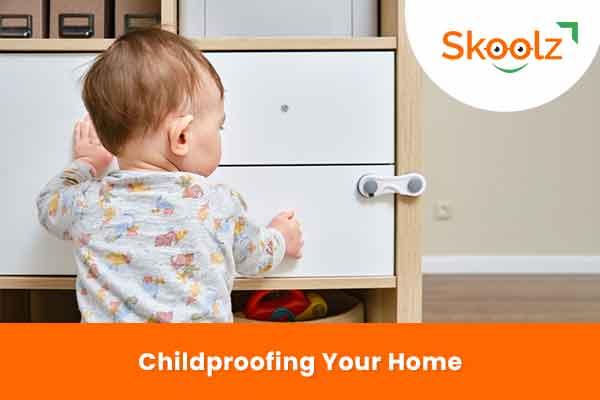
Childproofing is an essential step in creating a safe environment for your toddler. Here are some key areas to focus on:
Secure cabinets and drawers with childproof locks to prevent access to cleaning supplies, chemicals, and sharp objects.
Install safety gates at stairways and entrances to restrict access to potentially dangerous areas.
Cover electrical outlets with safety plugs or outlet covers.
Use corner guards on sharp furniture edges to prevent injuries.
Keep small objects, choking hazards, and toxic plants out of reach.
Install window guards or safety netting to prevent falls.
2. Supervision:
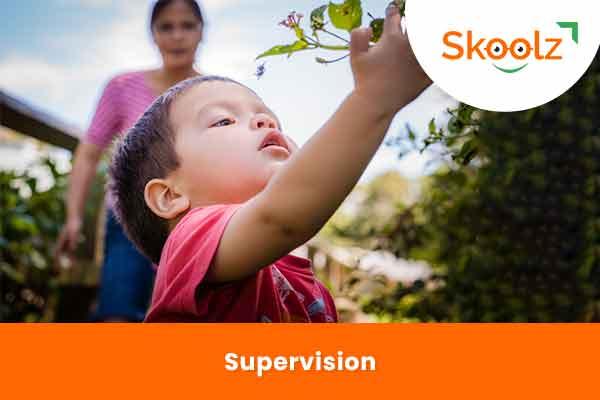
While childproofing is important, it's equally crucial to provide constant supervision. Toddlers have a knack for getting into unexpected situations. Stay vigilant and attentive, especially during activities that carry potential risks, such as cooking, bathing, or playing outdoors.
3. Safe Play Areas:
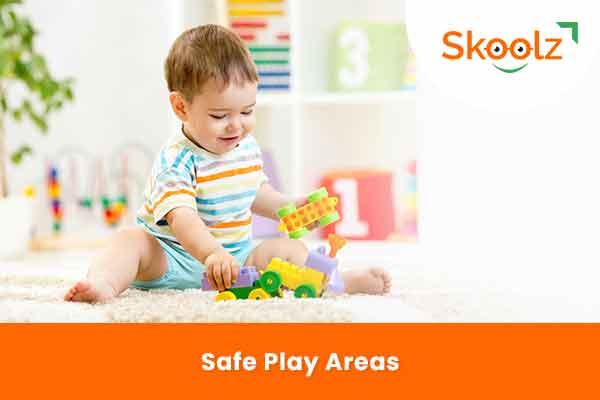
Designate a safe play area within your home where your toddler can freely explore and engage in age-appropriate activities. Use soft mats or rugs to cushion falls, and ensure that furniture and objects in the area are safe and stable. Remove any potential hazards, such as cords, small objects, or heavy items that can be pulled down.
4. Teaching Boundaries and Rules:
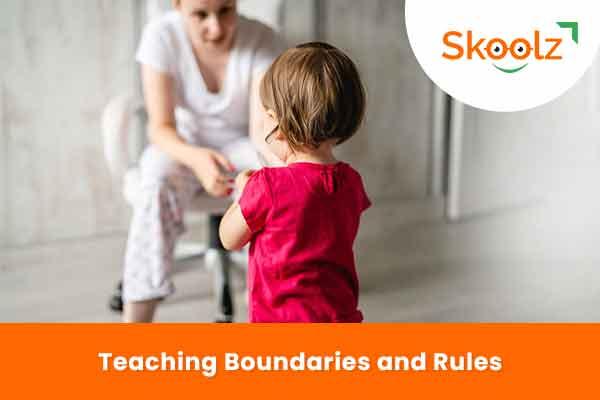
As your toddler explores, establish clear boundaries and rules to ensure their safety. Teach them what is off-limits and why certain areas or objects may be dangerous. Use simple and consistent language to explain rules and redirect their attention to safe alternatives when needed.
5. Encourage Independence:

Allow your toddler to develop independence within safe parameters. Offer child-sized furniture, utensils, and age-appropriate toys that encourage exploration and learning. Encouraging independence helps build confidence while ensuring their safety.
6. Water Safety:
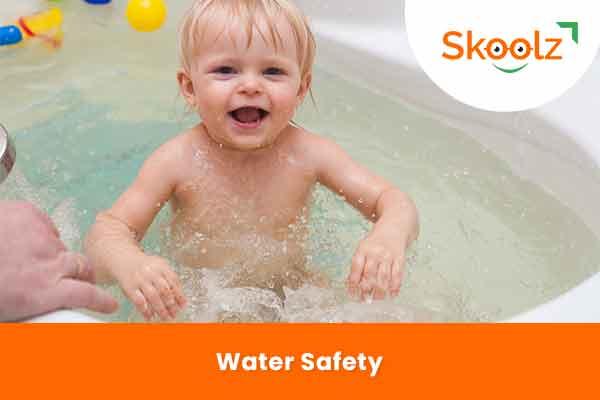
Drowning is a significant concern for toddlers. Take the following precautions to keep your child safe around water:
Never leave your toddler unattended near pools, bathtubs, or other bodies of water.
Secure pools with appropriate barriers, covers, and alarms.
Empty bathtubs, buckets, and containers of water immediately after use.
Teach your toddler water safety rules, such as not entering the water without adult supervision.
Conclusion:
Creating a safe environment for your curious toddler is essential to foster their exploration and protect their well-being. By childproofing your home, providing supervision, establishing boundaries, and teaching safety rules, you can create a space that encourages your toddler's natural curiosity while minimizing potential hazards. Remember, consistent vigilance and ongoing adjustments to safety measures are key as your child continues to grow and explore the world around them.
References:
American Academy of Pediatrics. (2021). Making Sure Your Home Is Safe for Kids. Retrieved from https://www.healthychildren.org/English/safety-prevention/at-home/Pages/A-Message-for-Parents.aspx
Centers for Disease Control and Prevention. (2021). Child Safety and Injury Prevention. Retrieved from https://www.cdc.gov/safechild/index.html
FAQs about Creating a Safe Environment for Curious Toddlers:
Q1. At what age should I start childproofing my home?
A: It's best to start childproofing before your toddler becomes mobile, typically around 6 to 8 months old. However, it's never too late to make your home safer for your child.
Q2. How often should I reassess the safety of my home?
A: Regularly reassess the safety of your home as your toddler grows and develops new skills. Conduct safety checks every few months to ensure that your child's environment remains secure.
Q3. How can I ensure water safety for my toddler?
A: Always supervise your toddler around water and never leave them unattended. Secure pools, bathtubs, and containers of water when not in use, and teach your child water safety rules from an early age.
Q4. What should I do if my toddler is curious about electrical outlets?
A: Install safety plugs or outlet covers on all electrical outlets within your home. Additionally, consider using furniture to block access to outlets or move furniture in front of them.
Q5. How can I encourage my toddler's independence while maintaining safety?
A: Offer age-appropriate toys, furniture, and utensils that promote independent play and exploration. Provide a safe play area where your toddler can freely move and explore within the boundaries you've established.
Q6. What are some common choking hazards I should watch out for?
A: Small objects, coins, buttons, batteries, and certain foods such as grapes, nuts, and popcorn are common choking hazards. Keep these items out of reach of your toddler.
Q7. How can I teach my toddler to understand and respect boundaries?
A: Use consistent language and gentle redirection to help your toddler understand boundaries. Be patient and reinforce boundaries with positive guidance and modeling appropriate behavior.
Q8. Should I use safety gates throughout my home?
A: Safety gates are particularly useful in areas with potential hazards, such as stairways and rooms with fragile or dangerous items. Assess your home's layout and identify areas where safety gates would be beneficial.
Q9. How can I ensure my toddler's safety when visiting other people's homes or public places?
A: When visiting other homes or public places, be vigilant and assess the environment for potential hazards. Communicate with the host or caretaker about any specific safety concerns you may have.
Q10. What should I do if I notice a safety hazard in my home that I missed during childproofing?
A: Address the safety hazard immediately. Make the necessary adjustments to eliminate the risk or prevent your child's access to the hazard. Regularly check for new hazards or changes in the environment.
Disclaimer:
The information provided in this blog is for general guidance and educational purposes only. Every child and home is unique, and safety measures may vary. It's important to assess your specific situation and consult with professionals or experts when necessary to ensure the safety and well-being of your child.

Swati Sahu
Digital Marketer

Creating a Safe Environment for Curious Toddlers: Promoting Exploration and Safety
Toddlers are naturally curious and eager to explore the world around them. While their curiosity is essential for their development, it's crucial to create a safe environment that allows them to satisfy their curiosity while minimizing potential hazards. In this blog, we will discuss practical tips for creating a safe space for your curious toddler, ensuring their well-being, and fostering their natural desire to learn and discover.
1. Childproofing Your Home:

Childproofing is an essential step in creating a safe environment for your toddler. Here are some key areas to focus on:
Secure cabinets and drawers with childproof locks to prevent access to cleaning supplies, chemicals, and sharp objects.
Install safety gates at stairways and entrances to restrict access to potentially dangerous areas.
Cover electrical outlets with safety plugs or outlet covers.
Use corner guards on sharp furniture edges to prevent injuries.
Keep small objects, choking hazards, and toxic plants out of reach.
Install window guards or safety netting to prevent falls.
2. Supervision:

While childproofing is important, it's equally crucial to provide constant supervision. Toddlers have a knack for getting into unexpected situations. Stay vigilant and attentive, especially during activities that carry potential risks, such as cooking, bathing, or playing outdoors.
3. Safe Play Areas:

Designate a safe play area within your home where your toddler can freely explore and engage in age-appropriate activities. Use soft mats or rugs to cushion falls, and ensure that furniture and objects in the area are safe and stable. Remove any potential hazards, such as cords, small objects, or heavy items that can be pulled down.
4. Teaching Boundaries and Rules:

As your toddler explores, establish clear boundaries and rules to ensure their safety. Teach them what is off-limits and why certain areas or objects may be dangerous. Use simple and consistent language to explain rules and redirect their attention to safe alternatives when needed.
5. Encourage Independence:

Allow your toddler to develop independence within safe parameters. Offer child-sized furniture, utensils, and age-appropriate toys that encourage exploration and learning. Encouraging independence helps build confidence while ensuring their safety.
6. Water Safety:

Drowning is a significant concern for toddlers. Take the following precautions to keep your child safe around water:
Never leave your toddler unattended near pools, bathtubs, or other bodies of water.
Secure pools with appropriate barriers, covers, and alarms.
Empty bathtubs, buckets, and containers of water immediately after use.
Teach your toddler water safety rules, such as not entering the water without adult supervision.
Conclusion:
Creating a safe environment for your curious toddler is essential to foster their exploration and protect their well-being. By childproofing your home, providing supervision, establishing boundaries, and teaching safety rules, you can create a space that encourages your toddler's natural curiosity while minimizing potential hazards. Remember, consistent vigilance and ongoing adjustments to safety measures are key as your child continues to grow and explore the world around them.
References:
American Academy of Pediatrics. (2021). Making Sure Your Home Is Safe for Kids. Retrieved from https://www.healthychildren.org/English/safety-prevention/at-home/Pages/A-Message-for-Parents.aspx
Centers for Disease Control and Prevention. (2021). Child Safety and Injury Prevention. Retrieved from https://www.cdc.gov/safechild/index.html
FAQs about Creating a Safe Environment for Curious Toddlers:
Q1. At what age should I start childproofing my home?
A: It's best to start childproofing before your toddler becomes mobile, typically around 6 to 8 months old. However, it's never too late to make your home safer for your child.
Q2. How often should I reassess the safety of my home?
A: Regularly reassess the safety of your home as your toddler grows and develops new skills. Conduct safety checks every few months to ensure that your child's environment remains secure.
Q3. How can I ensure water safety for my toddler?
A: Always supervise your toddler around water and never leave them unattended. Secure pools, bathtubs, and containers of water when not in use, and teach your child water safety rules from an early age.
Q4. What should I do if my toddler is curious about electrical outlets?
A: Install safety plugs or outlet covers on all electrical outlets within your home. Additionally, consider using furniture to block access to outlets or move furniture in front of them.
Q5. How can I encourage my toddler's independence while maintaining safety?
A: Offer age-appropriate toys, furniture, and utensils that promote independent play and exploration. Provide a safe play area where your toddler can freely move and explore within the boundaries you've established.
Q6. What are some common choking hazards I should watch out for?
A: Small objects, coins, buttons, batteries, and certain foods such as grapes, nuts, and popcorn are common choking hazards. Keep these items out of reach of your toddler.
Q7. How can I teach my toddler to understand and respect boundaries?
A: Use consistent language and gentle redirection to help your toddler understand boundaries. Be patient and reinforce boundaries with positive guidance and modeling appropriate behavior.
Q8. Should I use safety gates throughout my home?
A: Safety gates are particularly useful in areas with potential hazards, such as stairways and rooms with fragile or dangerous items. Assess your home's layout and identify areas where safety gates would be beneficial.
Q9. How can I ensure my toddler's safety when visiting other people's homes or public places?
A: When visiting other homes or public places, be vigilant and assess the environment for potential hazards. Communicate with the host or caretaker about any specific safety concerns you may have.
Q10. What should I do if I notice a safety hazard in my home that I missed during childproofing?
A: Address the safety hazard immediately. Make the necessary adjustments to eliminate the risk or prevent your child's access to the hazard. Regularly check for new hazards or changes in the environment.
Disclaimer:
The information provided in this blog is for general guidance and educational purposes only. Every child and home is unique, and safety measures may vary. It's important to assess your specific situation and consult with professionals or experts when necessary to ensure the safety and well-being of your child.

Swati Sahu
Digital Marketer




